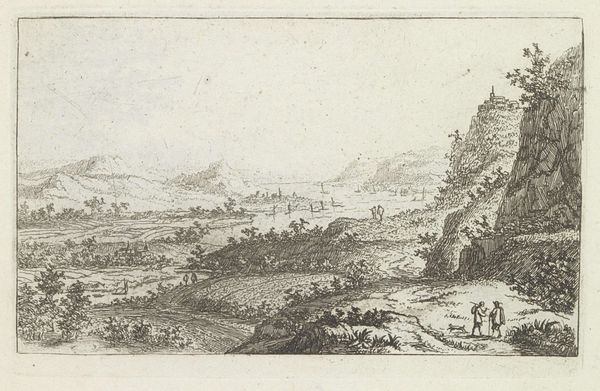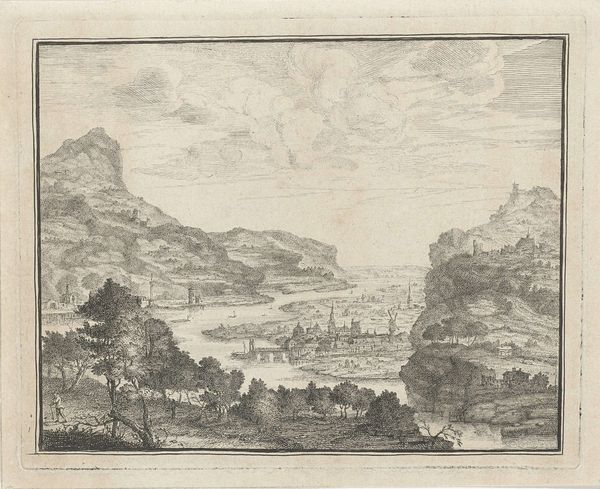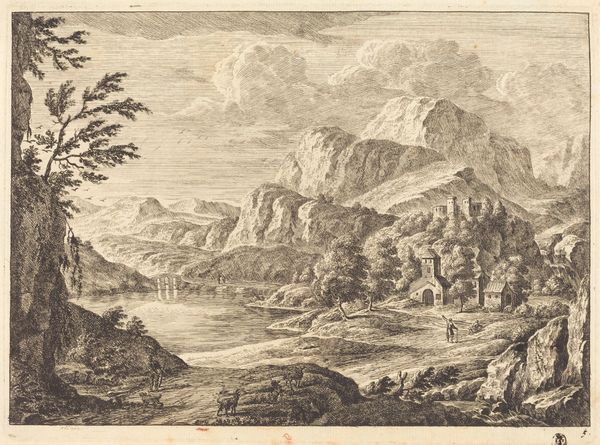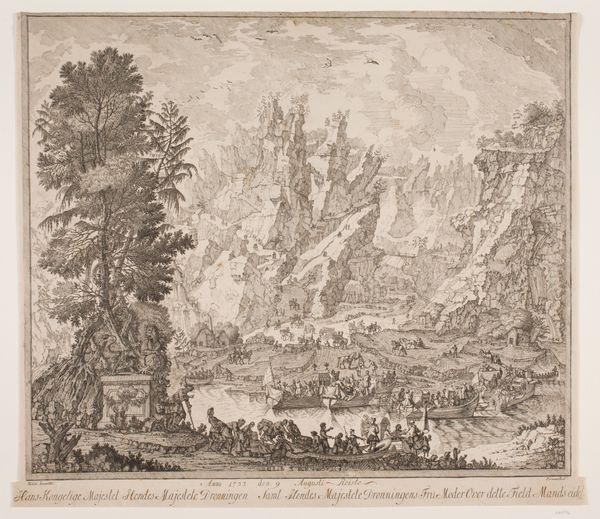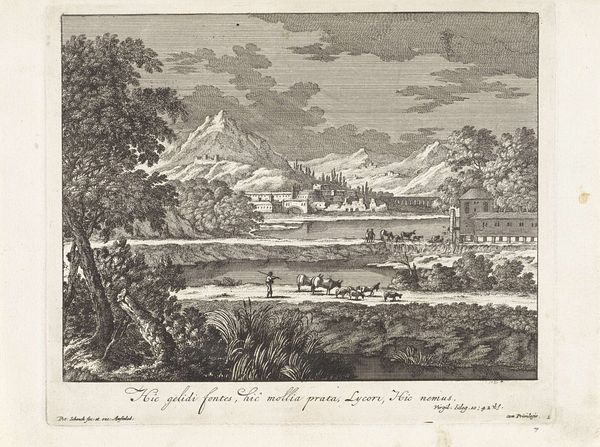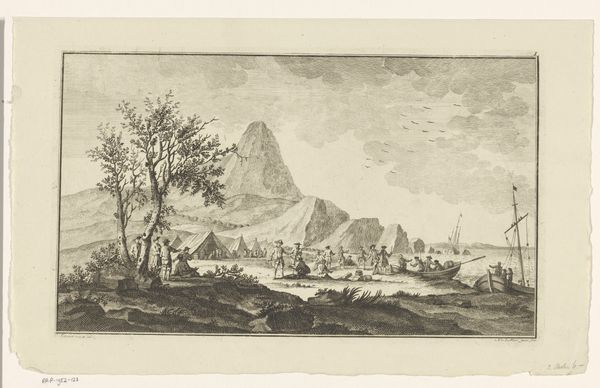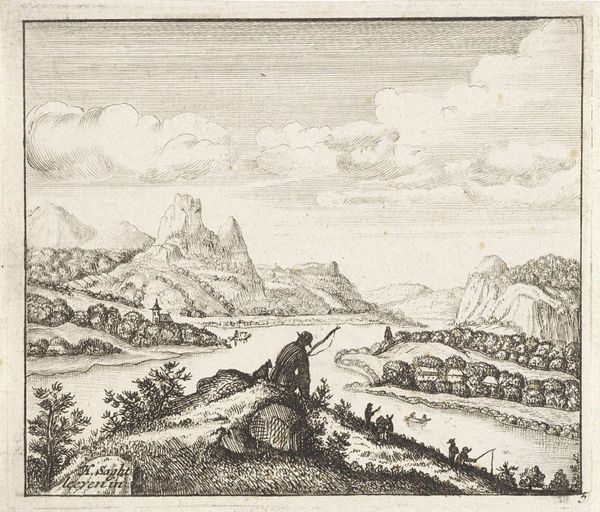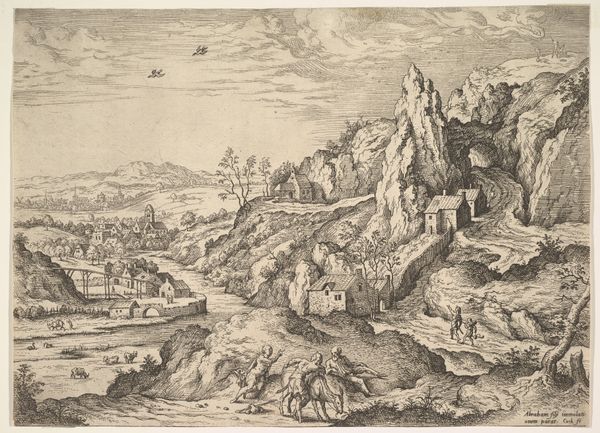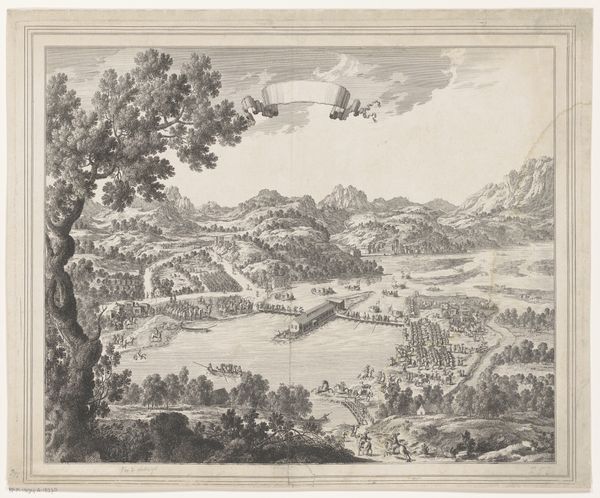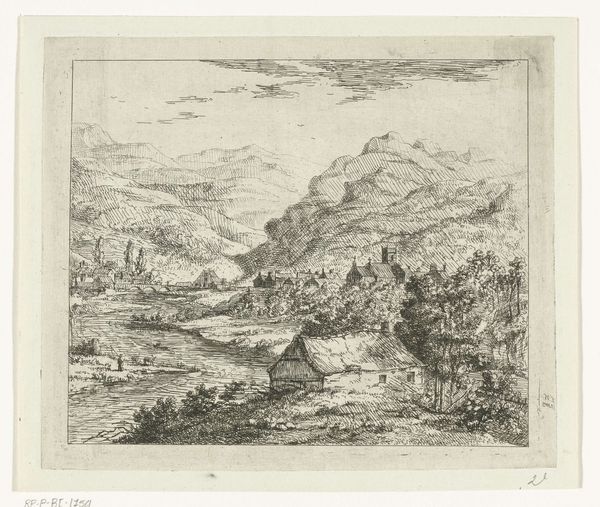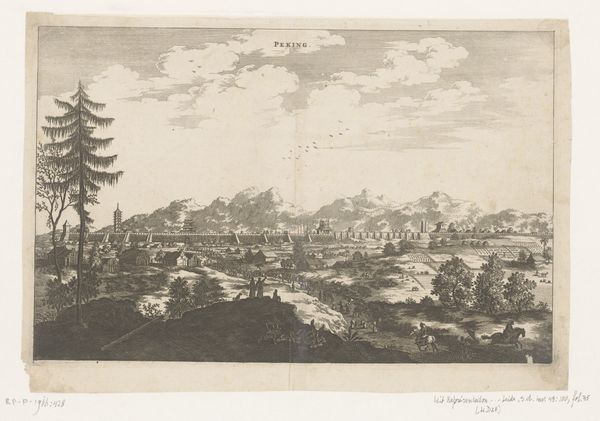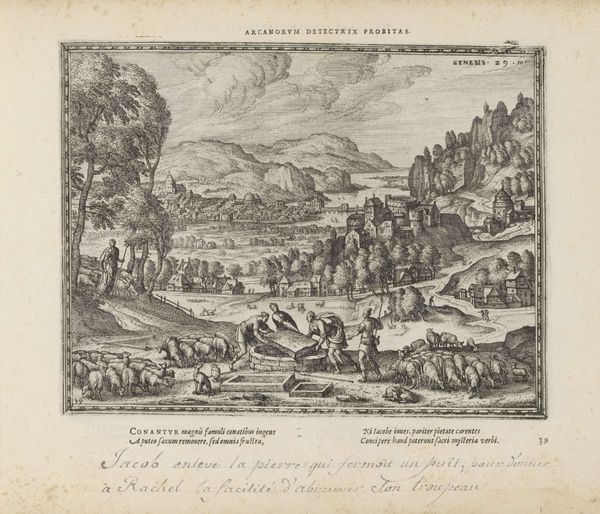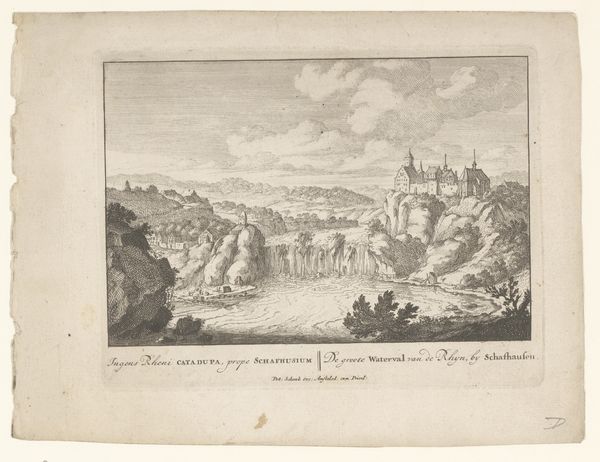
print, engraving
#
dutch-golden-age
# print
#
old engraving style
#
landscape
#
line
#
cityscape
#
engraving
#
realism
Dimensions: 103 mm (height) x 126 mm (width) (plademaal)
Editor: Here we have Herman Saftleven's "Flood in a Mountainous Landscape," an engraving from 1667. The detail is quite striking. I'm curious about the way the landscape dominates, yet there’s also a sense of human presence in the details. What do you see in this piece? Curator: Well, it's essential to view this within the context of 17th-century Dutch art and its relationship to land. The Dutch Golden Age saw a surge in landscape painting that wasn't just about aesthetics, but also about national identity and power. How do you see the "flood" fitting into that? Editor: That's interesting! I hadn’t considered the flood element critically. Perhaps it speaks to a constant negotiation between the Dutch and the environment? Curator: Precisely. Water management was crucial, defining not just the landscape but also Dutch society itself. Floods, like this one, were threats, but also opportunities for engineering prowess and communal action. Consider the visual language used here. Notice how even in seeming disarray, there's order, almost a surveying of the land. Who has the power in this image? Editor: So, the act of depicting the flood is itself an assertion of control, even if subtly so? It’s like the artist is saying "we see this, we understand it, and therefore, we can manage it.” Curator: Exactly. And Saftleven wasn't simply representing a flood. He was participating in a visual discourse about Dutch resilience, their ongoing struggle with nature and their success in subduing it. It reflects a broader colonial mindset, too – the desire to dominate and control. Editor: I hadn't thought about those colonial implications. It makes me consider how landscapes aren't just passive backgrounds, but active players in power dynamics. I see so much more here now. Curator: It's through understanding the intersection of history, environment, and representation that we can truly understand a work like this. What have you learned today? Editor: Definitely to think critically about landscapes not just as beautiful scenery, but as spaces loaded with cultural and political meaning. Thanks!
Comments
No comments
Be the first to comment and join the conversation on the ultimate creative platform.
